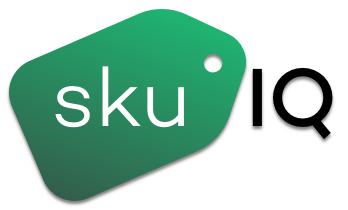Summary: Learn about alternative payment methods and why you should implement them in your retail store.
When you click on your online shopping cart, you might notice there’s quite a few more options these days than just “debit/credit.” Today, shoppers can expect to find alternative payment methods during checkout, including some that don’t force someone to reach into their wallet and grab their card immediately. Customers are so accustomed to these new payment methods that they might leave your retail or online store without completing their purchase if their preferred payment method is unavailable. In fact, studies show that 6% of shopping carts are abandoned because users didn’t find their preferred payment method.
Providing multiple payment options is a good way to cushion your business from issues that may arise with a specific payment option, whether due to technical glitches or scandals. While the best payment method will entirely depend on your inventory management and other needs, here are alternative payment methods you can try. If one method isn’t working, shoppers can choose another one from the available payment options.
1. Apple Pay
Apple users have the convenience of Apple Pay built right into their iPhones. Its convenient capabilities allows shoppers to checkout using Touch ID or Face ID. This level of convenience simplifies the entire checkout process (it literally takes two clicks!).
Apple Pay is compatible with nearly all modern Apple devices. Currently, it is enabled on over 383 million iPhones globally. In addition to online purchases, shoppers can use Apple Pay offline in retail stores that accept contactless payment options by simply holding their phone up to any POS or credit card reader. This option supports guest checkouts online, allowing users to complete their purchases without creating an account in the merchant’s online store.
Apple Pay is also a secure payment method. It uses a unique token system that leverages a highly encrypted system containing the information required to complete a specific transition. The required details may include a device-specific account number, a unique cryptogram, the order amount, and more. That means shoppers no longer need to share their card information.
According to a recent survey, merchants who use Apple Pay often boost their mobile conversions by about 20% and increase desktop conversion rates by approximately 15%. Similarly, retailers that use Apple Pay have also seen a significant increase in the average order value of mobile shoppers.
Additionally, a report by Apple suggests that businesses that use Apple Pay are likely to experience increased purchases, higher levels of customer loyalty, and significantly shorter checkout times. There’s no fee involved when using Apple Pay, and it’s also easy to add this payment on your point of sale or eCommerce platforms such as BigCommerce and Shopify.
2. Google Pay
Google created Google Pay in 2018 after merging its Android Pay and Google Wallet payment services. It’s a convenient option that allows shoppers to make online payments with a few clicks. Google Pay is a secure payment method that uses virtual numbers to eliminate the chances of sending users’ card information to merchants.
Most businesses are using this payment method and seeing great success. One of the top businesses using Google Pay is SpotHero, a parking app, which reported a 20X increase in its conversion rates, 150% improvement in client retention, and significantly reduced customer support calls – thanks to Google Pay.
Shoppers and merchants don’t incur fees when using Google Pay. It’s also possible to add Google Pay to your eCommerce shop, whether you use Shopify, WooCommerce, or BigCommerce.
3. PayPal
PayPal is among the most popular alternative payment methods for retail stores and online merchants. It allows shoppers to maintain a cash balance in their personal or business accounts and pay directly for purchases. Alternatively, users can draw funds from different sources, such as a bank account or credit card.
One of the top benefits of using PayPal is that shoppers no longer need to enter credit card or bank information during checkout. This makes them confident about their data security because most people hesitate to give merchants their financial data. It also makes fast checkout convenient as they only need to make a few clicks.
4. Afterpay
Afterpay is an Australian company that provides interest-free consumer loans. Its financing model, buy-now-pay-later, allows eligible shoppers to purchase items and pay them off over a specified period. Launched in 2015, this payment method serves clients in the United States, Australia, Canada, and New Zealand. It’s also available in France, the United Kingdom, and Spain.
Which Payment Method is a Good Fit For Your Business?
We don’t want you to fall behind and we definitely don’t want you to lose customers to your competitors over attainable convenience. Shoppers value convenience and choice. Alternative payments allow shoppers to make purchases digitally with a digital wallet, mobile payments application, or even an alternative currency like Bitcoin. Providing alternative payment options can go a long way in providing a better user experience. Set your retail store up for success by providing the flexibility your customers want!
Another factor for delivering great retail experiences is how your store handles inventory control and catalog management across multiple channels. Learn more about inventory management best practices.


